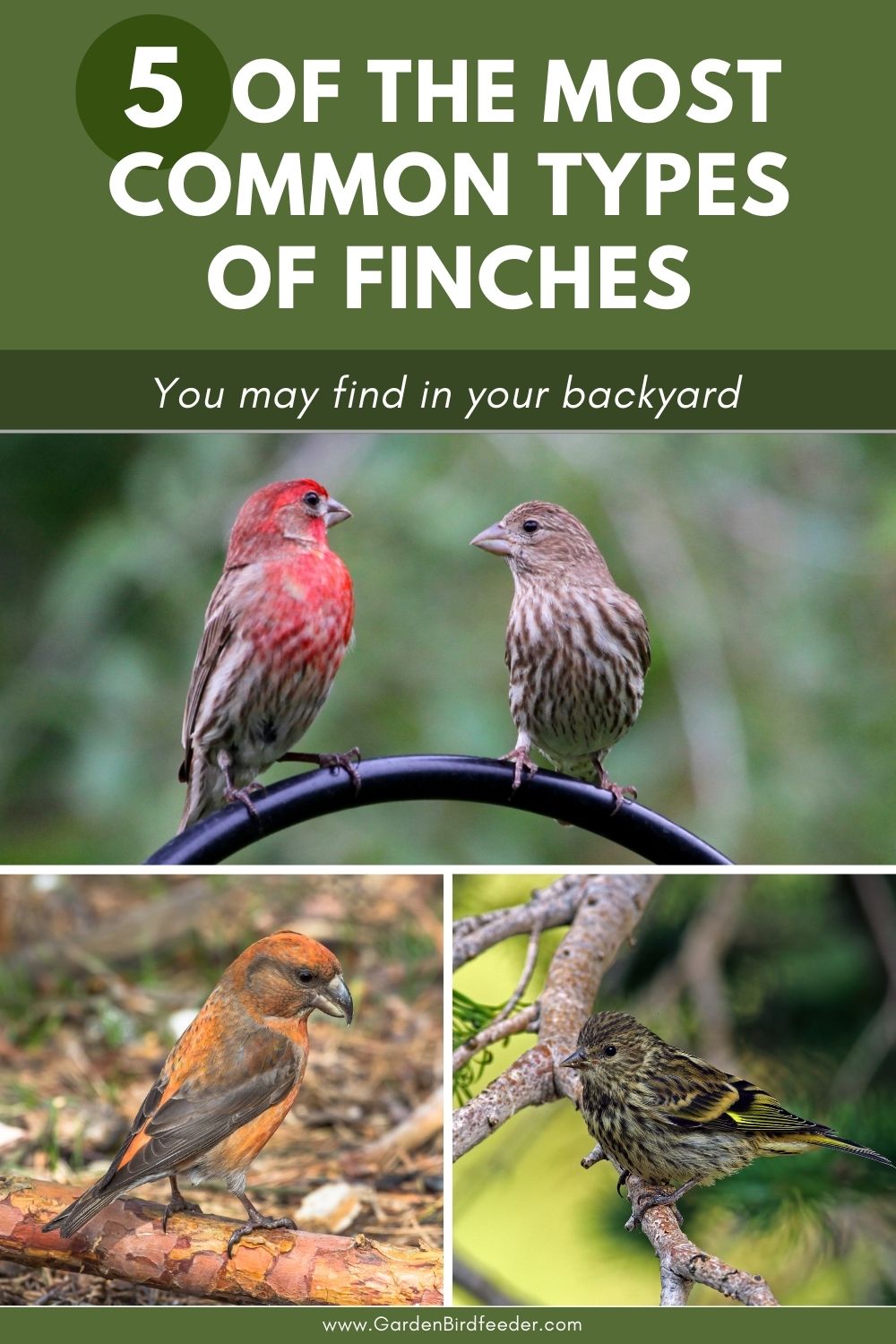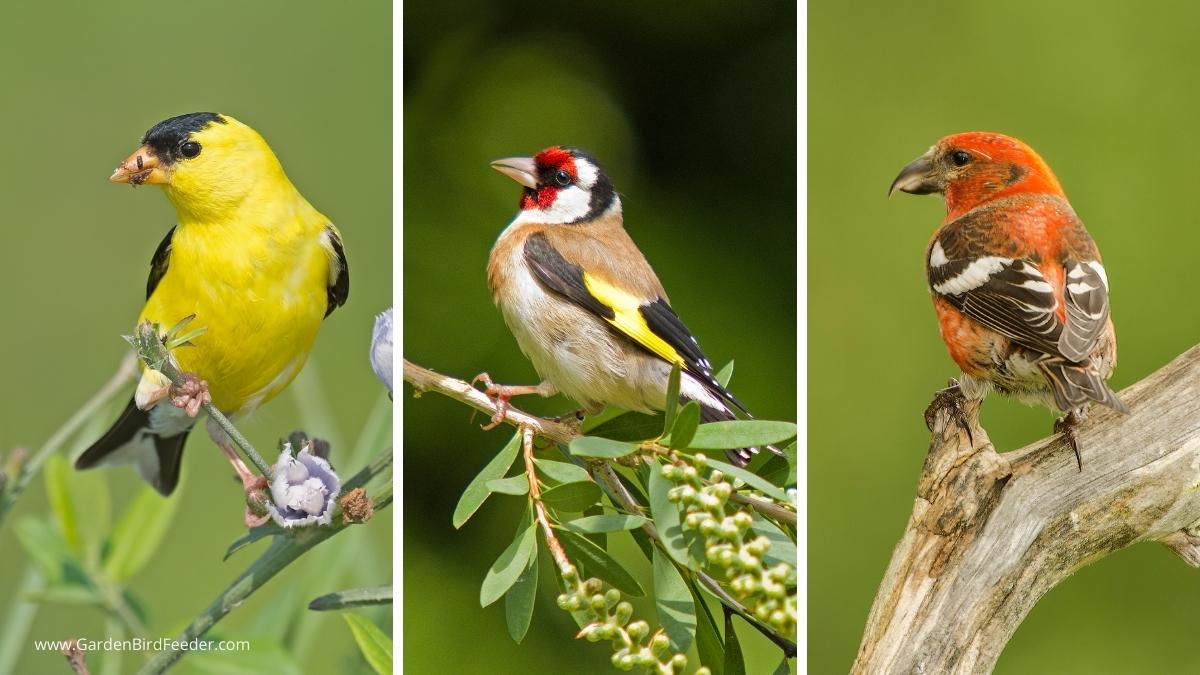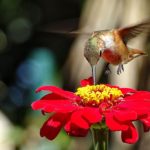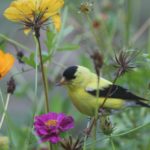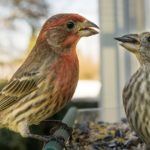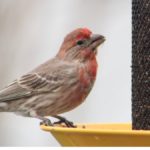Learn more about five of the most common types of finches that are seen in the United States and the best finches to keep as pets.
Finches can live in a wide range of habitats. Once they’ve found a home, they stay there and do not migrate. These stout birds have colorful plumage and conical bills that make it easy to forage for nuts and seeds.
How Many Types of Finches Are There?
Finches can be found across the world, with the exception of Australia and polar areas. There are more than 200 species of finches, which include:
- Canaries
- Siskins
- Euphonias
- Grosbeaks
- Serins
- Redpolls
Many of these species can be found right here in the U.S. and in your own backyard.
5 Types of Finches in the US and Your Backyard
While there are several types of finches in the US, some are more commonly seen than others. Here are five finches you may see in your backyard this year.
1. House Finch
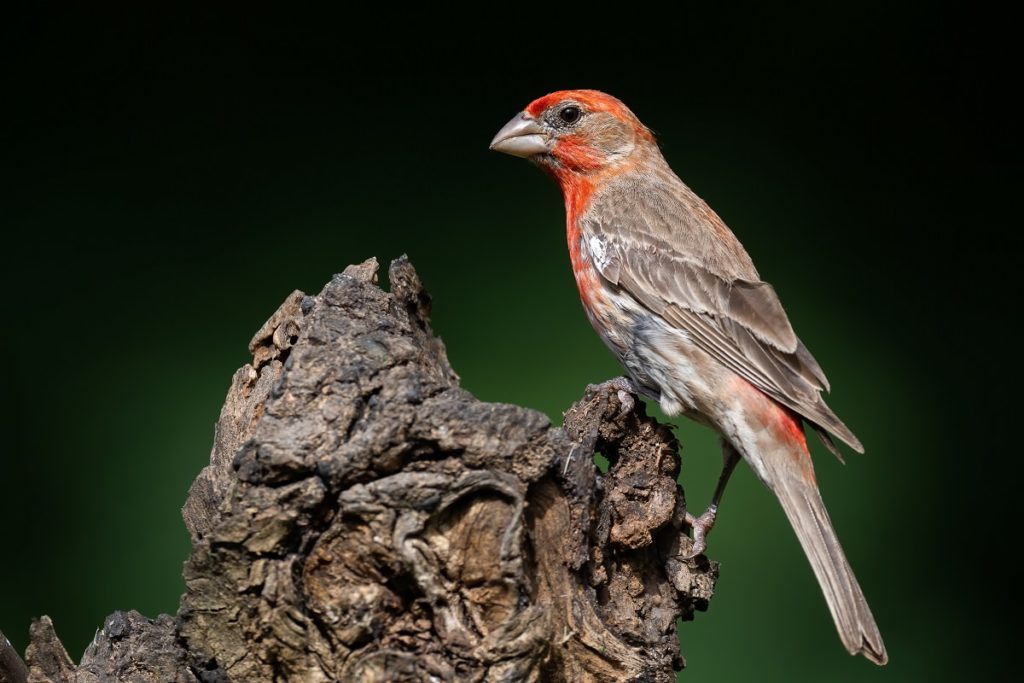
House Finches are commonly found in backyards and neighborhoods across the country. Their colorful appearance and cheerful songs make them welcomed visitors. House Finches are native to the Southwest, but they’ve made their way East. Today, House Finches can be found throughout most of the U.S.
Appearance
House Finches have smaller bodies with short wings, fairly large beaks and flatter heads. Males and females have different coloring.
- Adult males have red coloring around the face and upper breast.
- Adult females are a plain gray-brown color.
Male and female House Finches are about 5.1-5.5” long with a wingspan of just 7.9-9.8.”
Behavior and Diet
House Finches are a gregarious species. They will perch high on trees or collect at feeders. They’ll also collect on the ground or on weeds.
Along with seeds, House Finches will also eat berries and buds. However, the majority of their diet is vegetable matter.
2. Pine Siskin
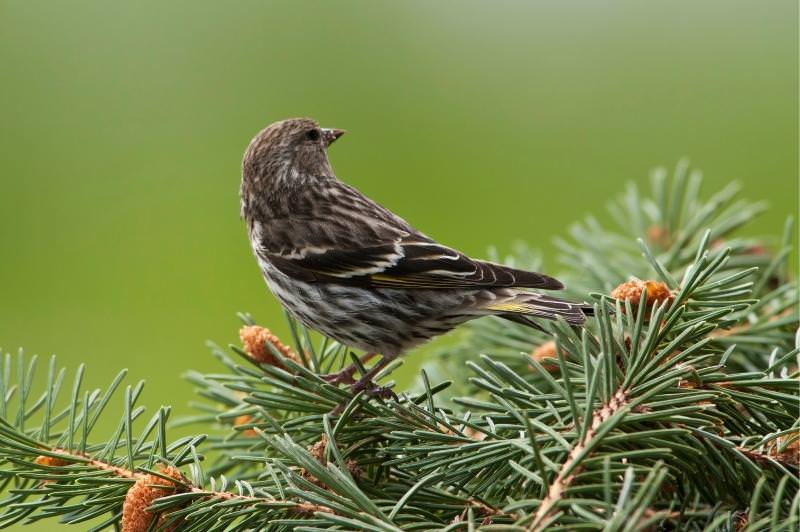
The pine siskin looks and acts like a sparrow, but it’s really just a goldfinch in disguise. Pine Siskins travel in flocks, preferring semi-open areas. You’ll often find them clutched on conifer branches or even hanging upside down to feed on cones.
Appearance
Pine Siskins are tiny songbirds with notched tails and short, pointy beaks. These mottled birds have streaks of brown and beige with flashes of yellow on their wings that peek out when they take flight.
Behavior and Diet
Pine Siskins forage in flocks and will sometimes hang upside down from branches to forage seeds.
While their diet consists mostly of vegetable matter and seeds, the pine siskin will also eat insects from time to time.
3. American Goldfinch
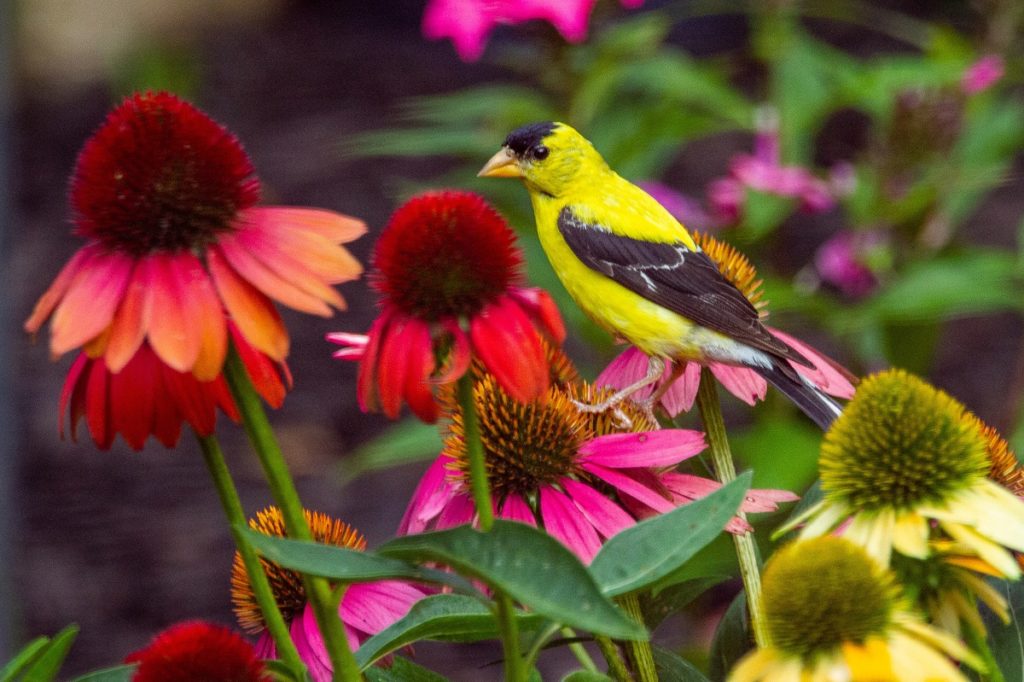
It’s no surprise that the American Goldfinch is the state bird of Iowa, New Jersey and Washington. Its strikingly beautiful appearance makes it a welcome sight in backyards and birdfeeders. They’re often found flying over meadows, flashing gold in the summer sun.
Appearance
The American Goldfinch is one of the most common backyard birds, but their molting cycle can make it a little difficult to identify them.
- When sporting their breeding colors, males are distinctively yellow. In addition, they have bold black coloring on the crown, wings and tail. Their wings also have one broad white wing bar.
- Females are plain looking and may even be confused for a plain warbler. They may have a pale yellow wash on the throat. Some females have brighter yellow coloring along their flanks and breasts. Like their male counterparts, they have black wings with a white wing bar.
- In winter – when they are without their breeding colors – males and females look similar. Their heads are a warm beige color, and their throats have dulled yellow coloring.
Molting American Goldfinches have patchy appearances.
Behavior and Diet
They love asters and thistles. You can find these finches at feeders any time of the year, especially in winter.
4. Evening Grosbeak
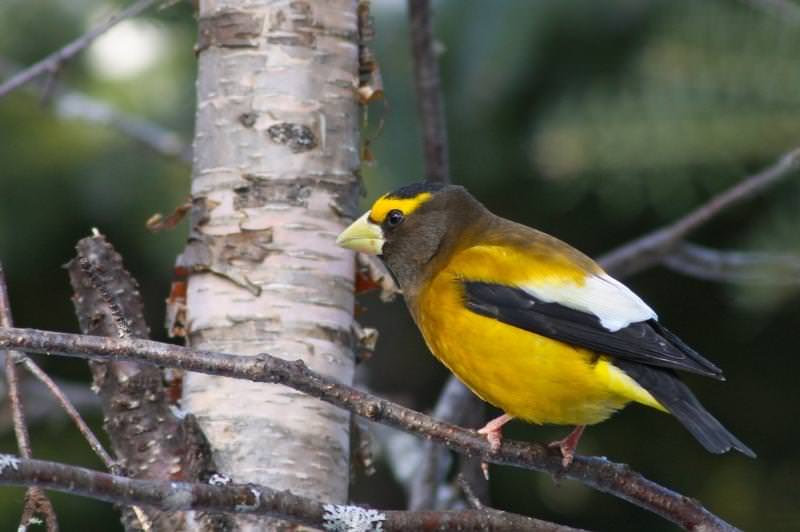
The Evening Grosbeak is a heavyset finch that prefers coniferous forests. They may not visit your yard every year, but they will show up every few years at your feeder.
Appearance
These chunky finches have thick, conical beaks with full chests and necks. Males and females have different color patterns.
- Adult males have yellow and black coloring with distinctive white patches on their wings. In addition, their crowns have dark coloring with a yellow stripe over their eyes.
- Females and immature birds are primarily gray with black and white wings. Their flanks and necks have a slight yellowish-green tinge.
These finches are around the size of a Northern Cardinal, with a length of 6.3-7.1” long with a wingspan of 11.8-14.2.”
Behavior and Diet
As social birds, Evening Grosbeaks will forage in flocks during the winter. During the breeding season, they break off into smaller groups or pairs.
Evening Grosbeaks eat:
- Seeds
- Berries
- Tree and shrub buds
They love seeds of ash, box elder, locust and maple trees. They’ll also feed on the buds of deciduous trees and weed seeds.
While their diet is mostly vegetable matter, these finches will eat some insects in the summer.
5. Red Crossbill
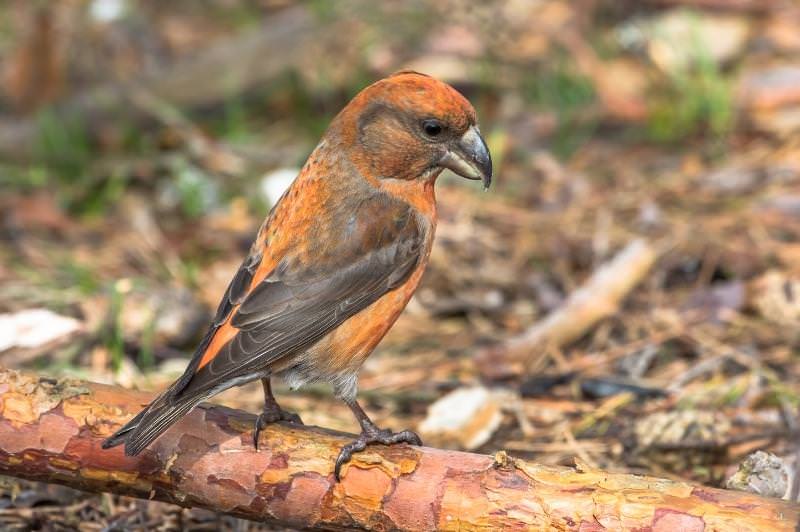
The Red Crossbill can be found throughout the U.S., with the exception of the far southeast. These birds love coniferous woodlands, and they may nest just about anywhere they can find an abundance of food.
Crossbills have odd-shaped bills (hence, the name) that helps them reach into tightly closed cones.
Appearance
The Red Crossbill is bigger than a warbler, but their sizes can vary greatly. Some are bigger than a Brown-Headed Cowbird, while others are barely bigger than a Chickadee. Males and females have different color patterns.
- Adult males have a brick red color, with deep reddish-brown wings and tail.
- Females have olive-brown coloring at the top and yellow-brown coloring at the bottom.
Immature birds have brownish coloring at the top and pale coloring with brown streaks below.
Behavior and Diet
Red Crossbills forage in flocks and prefer to dine on conifer seeds. You’ll often see them flying in groups from one tree to another. Adult males will perch on top of conifers to watch for predators and sing.
Best Finches to Keep as Pets
Wild finches can be found right in your backyard, but what if you wanted to keep these colorful birds as pets? Which species are best as companions?
The Zebra Finch
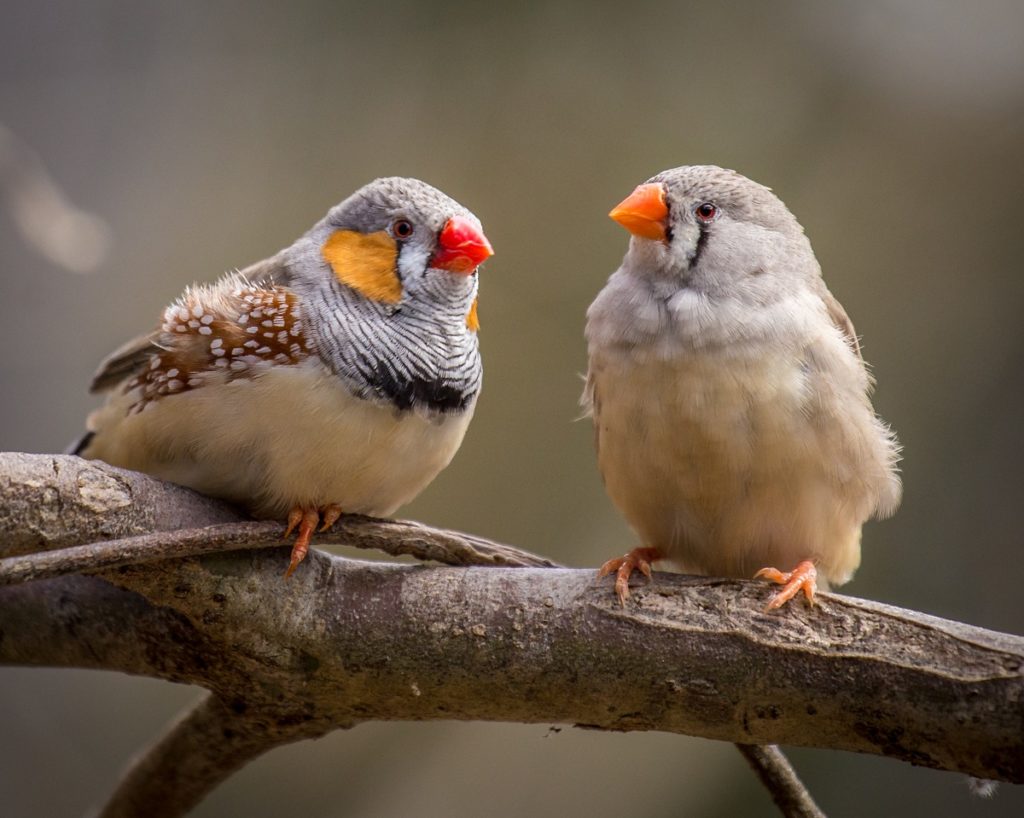
Zebra finches are one of the most popular species to keep as pets. They’re resilient, small and beautiful. Their tales have zebra-like patterns, with chestnut bellies and a primarily gray top.
These finches make great pets, but they can be very territorial.
The Gouldian Finch
The Gouldian Finch has wildly colorful plumage, with a purple or white chest, green backs, yellow bellies, red faces and blue accents. Their appearance is stunning, but they also make perfect little pets.
They’re small in size and have passive personalities, making them ideal for sharing cages with other birds.
The Society Finch
Although their plumage isn’t as impressive as other species, the Society Finch is quite social and resilient. They have pale bellies with brown speckled backsides.
These finches are so social that they’ve been known to foster the young of other bird species. They only grow to be about four inches tall, making them a great option as pets.
Finches Around the World
The U.S. and North America are home to several species of finches. Other species found across the globe include:
- Collard Grosbeak
- Rosefinch
- Golden-Winged Grosbeaks
- Greenfinches
- Bullfinches
- European Goldfinch
- Yellow Canary
Summary
Finches are colorful birds with a wide range of habitats and behaviors. They’re found around the world, with many species right in your own backyard.
Like it? Pin It!
